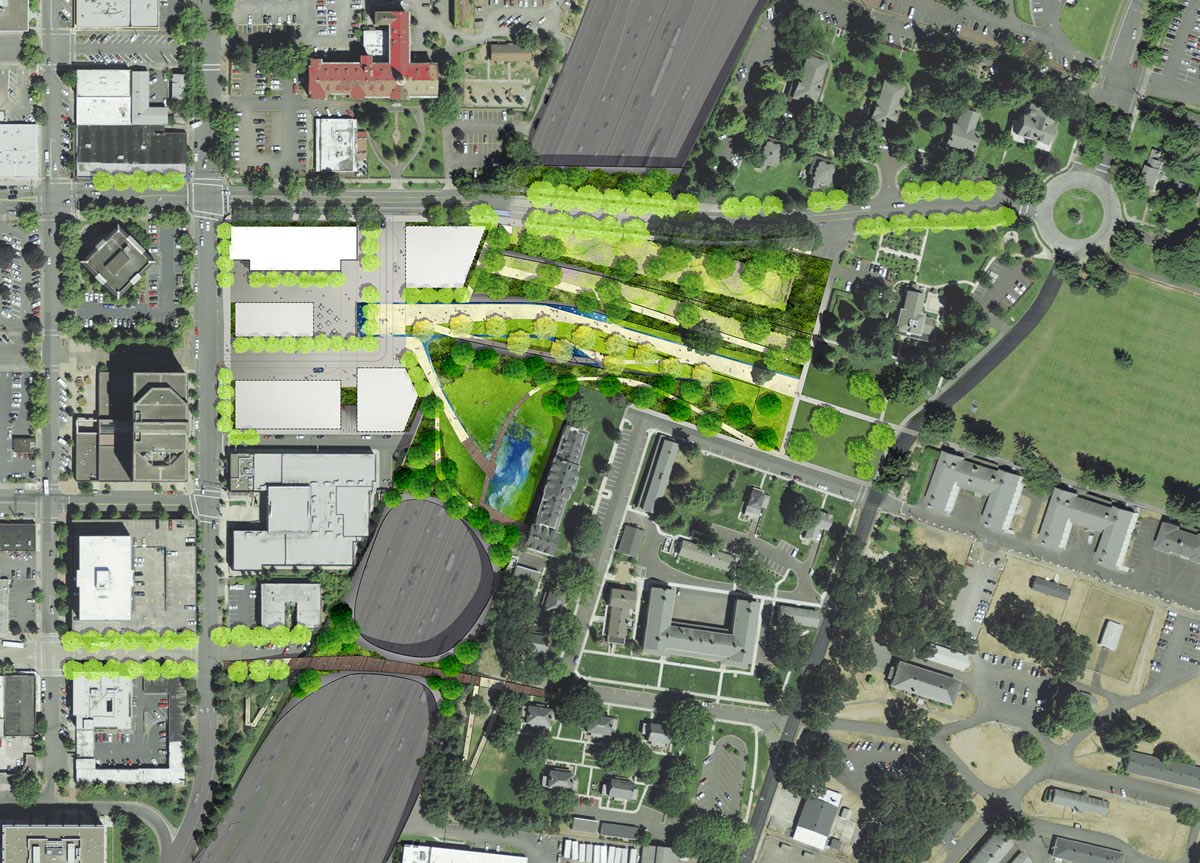When Columbia River Crossing planners shifted their focus to a curtailed version of the Interstate 5 Bridge replacement earlier this year, they also dropped a lesser-known component once seen as essential: the “Community Connector” freeway lid over Interstate 5.
CRC and state officials confirmed this month that the proposed cap — intended to link downtown Vancouver with the Fort Vancouver National Historic Site — is no longer part of the revised project with Oregon at the helm. Without funding from Washington, planners are now pursuing a $2.7 billion version of the CRC that eliminates most freeway work north of the Columbia River.
The reconfigured plan would still build a new interchange at state Highway 14, connecting directly to the new bridge. That means adverse impacts to the Fort Vancouver site are likely, and some type of mitigation would be required under federal rules.
CRC planners now say a planned “curation facility” for the fort’s historic artifacts meets that requirement. They’ve also floated the idea of building noise walls along the freeway. But the entities closest to the historic site aren’t interested in seeing new barriers in place of the connector, said Elson Strahan, president of the nonprofit Fort Vancouver National Trust.
“Neither the trust, nor the city, nor, importantly, the Park Service regard that option as acceptable,” Strahan said. It’s the National Park Service that owns much of the impacted Fort Vancouver grounds.
In 2009, planners said the connector was required as mitigation for cutting off about 3 acres of the Fort Vancouver grounds to make room for freeway widening. In 2011, then-project director Nancy Boyd said only sound walls would be needed as mitigation, not the freeway cap.
Officials maintained they still wanted to make the connector happen. But by then, it had been scaled down to little more than a concrete slab with a $30 million price tag — unless the city could come up with additional money to landscape it.
Now the Community Connector has been scrapped entirely.
That could change if the Washington Legislature decides to commit money to the project, said Oregon Department of Transportation spokesman Patrick Cooney. Lawmakers in Olympia adjourned earlier this year without authorizing anything for the CRC; planners have said freeway work in Washington could be completed in the future if funding materializes.
Strahan said the trust is holding out hope that the latest iteration of the CRC doesn’t mean the connector is gone for good.
“In addition to providing for mitigation as a legal requirement, clearly the Community Connector adds a tremendous value to the community as a whole, and reconnecting the downtown area with the historic area,” he said.
Detailed plans awaited
As the project evolves, the amount of Fort Vancouver land falling in its footprint could change, too. City of Vancouver officials are still waiting to see detailed plans showing what the CRC would look like without some interchanges and expansion included, said Matt Ransom, the city’s project development and policy manager.
That design work is still underway, said CRC spokeswoman Mandy Putney. Until it’s complete, it’s too soon to assess what does or does not need to be included from the city’s standpoint, Ransom said.
“We know the basic concept, but when you start talking about impacts, you need the fine level of detail,” he said. “We’re literally talking about feet here.”
Plans for the Community Connector were first unveiled in 2009. Leaders selected a parklike design with elaborate landscaping and walking paths. The lid would cover the freeway near the existing Evergreen Boulevard overpass.
Though those plans later changed, local partners remain supportive of the connector.
Strahan said the driver for building the freeway cap remains in play. Avoiding impacts to the Fort Vancouver site would mean building a new bridge and interchange, then squeezing the freeway into its current footprint farther north, he said.
“That just doesn’t seem possible,” Strahan said.




